
- Oct 13, 2019

10 Steps to Problem Solving for Engineers
Updated: Dec 6, 2020
With the official launch of the engineering book 10+1 Steps to Problem Solving: An Engineer's Guide it may be interesting to know that formalization of the concept began in episode 2 of the Engineering IRL Podcast back in July 2018.
As noted in the book remnants of the steps had existed throughout my career and in this episode I actually recorded the episode off the top of my head.
My goal was to help engineers build a practical approach to problem solving.
Have a listen.
Who can advise on the best approach to problem solving other than the professional problem solvers - Yes. I'm talking about being an Engineer.
There are 2 main trains of thought with Engineering work for non-engineers and that's trying to change the world with leading edge tech and innovations, or plain old boring math nerd type things.
Whilst, somewhat the case what this means is most content I read around Tech and Engineering are either super technical and (excruciatingly) detailed. OR really riff raff at the high level reveling at the possibilities of changing the world as we know it. And so what we end up with is a base (engineer only details) and the topping (media innovation coverage) but what about the meat? The contents?
There's a lot of beauty and interesting things there too. And what's the centrepiece? The common ground between all engineers? Problem solving.
The number one thing an Engineer does is problem solving. Now you may say, "hey, that's the same as my profession" - well this would be true for virtually every single profession on earth. This is not saying there isn't problem solving required in other professions. Some problems require very basic problem solving techniques such is used in every day life, but sometimes problems get more complicated, maybe they involve other parties, maybe its a specific quirk of the system in a specific scenario. One thing you learn in engineering is that not all problems are equal. These are
The stages of problem solving like a pro:
Is the problem identified (no, really, are you actually asking the right question?)
Have you applied related troubleshooting step to above problem?
Have you applied basic troubleshooting steps (i.e. check if its plugged in, turned it on and off again, checked your basics)
Tried step 2 again? (Desperation seeps in, but check your bases)
Asked a colleague or someone else that may have dealt with your problem? (50/50 at this point)
Asked DR. Google (This is still ok)
Deployed RTFM protocol (Read the F***ing Manual - Engineers are notorious for not doing this)
Repeated tests, changing slight things, checking relation to time, or number of people, or location or environment (we are getting DEEP now)
Go to the bottom level, in networking this is packet sniffers to inspect packets, in systems this is taking systems apart and testing in isolation, in software this is checking if 1 equals 1, you are trying to prove basic human facts that everyone knows. If 1 is not equal to 1, you're in deep trouble.At this point you are at rebuild from scratch, re install, start again as your answer (extremely expensive, very rare)
And there you have it! Those are your levels of problem solving. As you go through each step, the more expensive the problem is. -- BUT WAIT. I picked something up along the way and this is where I typically thrive. Somewhere between problem solving step 8 and 10.

The secret step
My recommendation at this point is to try tests that are seemingly unrelated to anything to do with the problem at all.Pull a random cable, test with a random system off/on, try it at a specific time of the day, try it specifically after restarting or replugging something in. Now, not completely random but within some sort of scope. These test are the ones that when someone is having a problem when you suggest they say "that shouldn't fix the problem, that shouldn't be related" and they are absolutely correct.But here's the thing -- at this stage they have already tried everything that SHOULD fix the problem. Now it's time for the hail mary's, the long shots, the clutching at straws. This method works wonders for many reasons. 1. You really are trying to try "anything" at this point.
2. Most of the time we may think we have problem solving step number 1 covered, but we really don't.
3. Triggering correlations.
This is important.
Triggering correlations
In a later post I will cover correlation vs causation, but for now understand that sometimes all you want to do is throw in new inputs to the system or problem you are solving in order to get clues or re identify problems or give new ways to approach earlier problem solving steps. There you have it. Problem solve like a ninja. Approach that extremely experienced and smart person what their problem and as they describe all the things they've tried, throw in a random thing they haven't tried. And when they say, well that shouldn't fix it, you ask them, well if you've exhausted everything that should have worked, this is the time to try things that shouldn't. Either they will think of more tests they haven't considered so as to avoid doing your preposterous idea OR they try it and get a new clue to their problem. Heck, at worst they confirm that they do know SOMETHING about the system.
Go out and problem solve ! As always, thanks for reading and good luck with all of your side hustles.
If you prefer to listen to learn we got you covered with the Engineering IRL show!
For Youtube please go to:
https://youtu.be/EHaRNZhqmHA
For Spotify please go to:
https://open.spotify.com/show/3UZPfOvNwQkaCA1jLIOxp4
And don't forget to subscribe if you get any value from the Engineering IRL Content
- Technical Tactics
- 10+1 Steps to Problem Solving
Recent Posts
How to Implement OSHA’s Requirement of Emergency Medical Services in Construction
Preventing Noise-Induced Issues in Construction
The Advantages of CAD for Modern Engineers
Get your free Engineering Toolkit for Engineering IRL listeners only

Get a copy of the Operational Technology Ultimate Guide for Engineers e-book for free.
FREE K-12 standards-aligned STEM
curriculum for educators everywhere!
Find more at TeachEngineering.org .
- TeachEngineering
- Problem Solving
Lesson Problem Solving
Grade Level: 8 (6-8)
(two 40-minute class periods)
Lesson Dependency: The Energy Problem
Subject Areas: Physical Science, Science and Technology

- Print lesson and its associated curriculum
Curriculum in this Unit Units serve as guides to a particular content or subject area. Nested under units are lessons (in purple) and hands-on activities (in blue). Note that not all lessons and activities will exist under a unit, and instead may exist as "standalone" curriculum.
- Energy Forms and States Demonstrations
- Energy Conversions
- Watt Meters to Measure Energy Consumption
- Household Energy Audit
- Light vs. Heat Bulbs
- Efficiency of an Electromechanical System
- Efficiency of a Water Heating System
- Solving Energy Problems
- Energy Projects
TE Newsletter
Engineering connection, learning objectives, worksheets and attachments, more curriculum like this, introduction/motivation, associated activities, user comments & tips.

Scientists, engineers and ordinary people use problem solving each day to work out solutions to various problems. Using a systematic and iterative procedure to solve a problem is efficient and provides a logical flow of knowledge and progress.
- Students demonstrate an understanding of the Technological Method of Problem Solving.
- Students are able to apply the Technological Method of Problem Solving to a real-life problem.
Educational Standards Each TeachEngineering lesson or activity is correlated to one or more K-12 science, technology, engineering or math (STEM) educational standards. All 100,000+ K-12 STEM standards covered in TeachEngineering are collected, maintained and packaged by the Achievement Standards Network (ASN) , a project of D2L (www.achievementstandards.org). In the ASN, standards are hierarchically structured: first by source; e.g. , by state; within source by type; e.g. , science or mathematics; within type by subtype, then by grade, etc .
Ngss: next generation science standards - science.
View aligned curriculum
Do you agree with this alignment? Thanks for your feedback!
International Technology and Engineering Educators Association - Technology
State standards, national science education standards - science.
Scientists, engineers, and ordinary people use problem solving each day to work out solutions to various problems. Using a systematic and iterative procedure to solve a problem is efficient and provides a logical flow of knowledge and progress.
In this unit, we use what is called "The Technological Method of Problem Solving." This is a seven-step procedure that is highly iterative—you may go back and forth among the listed steps, and may not always follow them in order. Remember that in most engineering projects, more than one good answer exists. The goal is to get to the best solution for a given problem. Following the lesson conduct the associated activities Egg Drop and Solving Energy Problems for students to employ problem solving methods and techniques.
Lesson Background and Concepts for Teachers
The overall concept that is important in this lesson is: Using a standard method or procedure to solve problems makes the process easier and more effective.
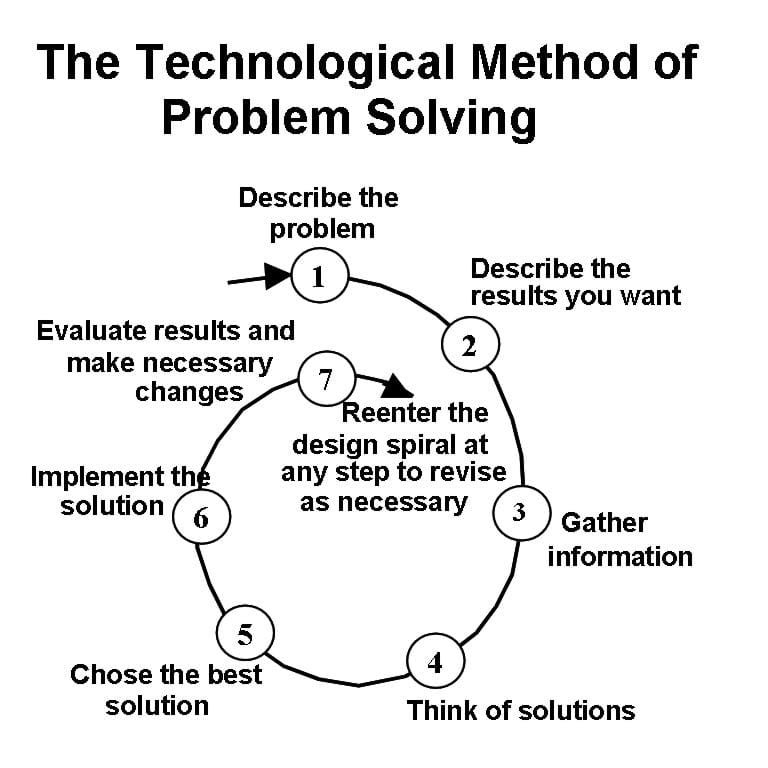
The specific process of problem solving used in this unit was adapted from an eighth-grade technology textbook written for New York State standard technology curriculum. The process is shown in Figure 1, with details included below. The spiral shape shows that this is an iterative, not linear, process. The process can skip ahead (for example, build a model early in the process to test a proof of concept) and go backwards (learn more about the problem or potential solutions if early ideas do not work well).
This process provides a reference that can be reiterated throughout the unit as students learn new material or ideas that are relevant to the completion of their unit projects.
Brainstorming about what we know about a problem or project and what we need to find out to move forward in a project is often a good starting point when faced with a new problem. This type of questioning provides a basis and relevance that is useful in other energy science and technology units. In this unit, the general problem that is addressed is the fact that Americans use a lot of energy, with the consequences that we have a dwindling supply of fossil fuels, and we are emitting a lot of carbon dioxide and other air pollutants. The specific project that students are assigned to address is an aspect of this problem that requires them to identify an action they can take in their own live to reduce their overall energy (or fossil fuel) consumption.
The Seven Steps of Problem Solving
1. Identify the problem
Clearly state the problem. (Short, sweet and to the point. This is the "big picture" problem, not the specific project you have been assigned.)
2. Establish what you want to achieve
- Completion of a specific project that will help to solve the overall problem.
- In one sentence answer the following question: How will I know I've completed this project?
- List criteria and constraints: Criteria are things you want the solution to have. Constraints are limitations, sometimes called specifications, or restrictions that should be part of the solution. They could be the type of materials, the size or weight the solution must meet, the specific tools or machines you have available, time you have to complete the task and cost of construction or materials.
3. Gather information and research
- Research is sometimes needed both to better understand the problem itself as well as possible solutions.
- Don't reinvent the wheel – looking at other solutions can lead to better solutions.
- Use past experiences.
4. Brainstorm possible solutions
List and/or sketch (as appropriate) as many solutions as you can think of.
5. Choose the best solution
Evaluate solution by: 1) Comparing possible solution against constraints and criteria 2) Making trade-offs to identify "best."
6. Implement the solution
- Develop plans that include (as required): drawings with measurements, details of construction, construction procedure.
- Define tasks and resources necessary for implementation.
- Implement actual plan as appropriate for your particular project.
7. Test and evaluate the solution
- Compare the solution against the criteria and constraints.
- Define how you might modify the solution for different or better results.
- Egg Drop - Use this demonstration or activity to introduce and use the problem solving method. Encourages creative design.
- Solving Energy Problems - Unit project is assigned and students begin with problem solving techniques to begin to address project. Mostly they learn that they do not know enough yet to solve the problem.
- Energy Projects - Students use what they learned about energy systems to create a project related to identifying and carrying out a personal change to reduce energy consumption.
The results of the problem solving activity provide a basis for the entire semester project. Collect and review the worksheets to make sure that students are started on the right track.

Learn the basics of the analysis of forces engineers perform at the truss joints to calculate the strength of a truss bridge known as the “method of joints.” Find the tensions and compressions to solve systems of linear equations where the size depends on the number of elements and nodes in the trus...

Through role playing and problem solving, this lesson sets the stage for a friendly competition between groups to design and build a shielding device to protect humans traveling in space. The instructor asks students—how might we design radiation shielding for space travel?

A process for technical problem solving is introduced and applied to a fun demonstration. Given the success with the demo, the iterative nature of the process can be illustrated.

The culminating energy project is introduced and the technical problem solving process is applied to get students started on the project. By the end of the class, students should have a good perspective on what they have already learned and what they still need to learn to complete the project.

Hacker, M, Barden B., Living with Technology , 2nd edition. Albany NY: Delmar Publishers, 1993.
Other Related Information
This lesson was originally published by the Clarkson University K-12 Project Based Learning Partnership Program and may be accessed at http://internal.clarkson.edu/highschool/k12/project/energysystems.html.
Contributors
Supporting program, acknowledgements.
This lesson was developed under National Science Foundation grants no. DUE 0428127 and DGE 0338216. However, these contents do not necessarily represent the policies of the National Science Foundation, and you should not assume endorsement by the federal government.
Last modified: August 16, 2023

Want to create or adapt books like this? Learn more about how Pressbooks supports open publishing practices.
3 What is Problem Solving?
Chapter table of contents, what is problem solving.
- What Does Problem Solving Look Like?
Developing Problem Solving Processes
Summary of strategies, problem solving: an important job skill.
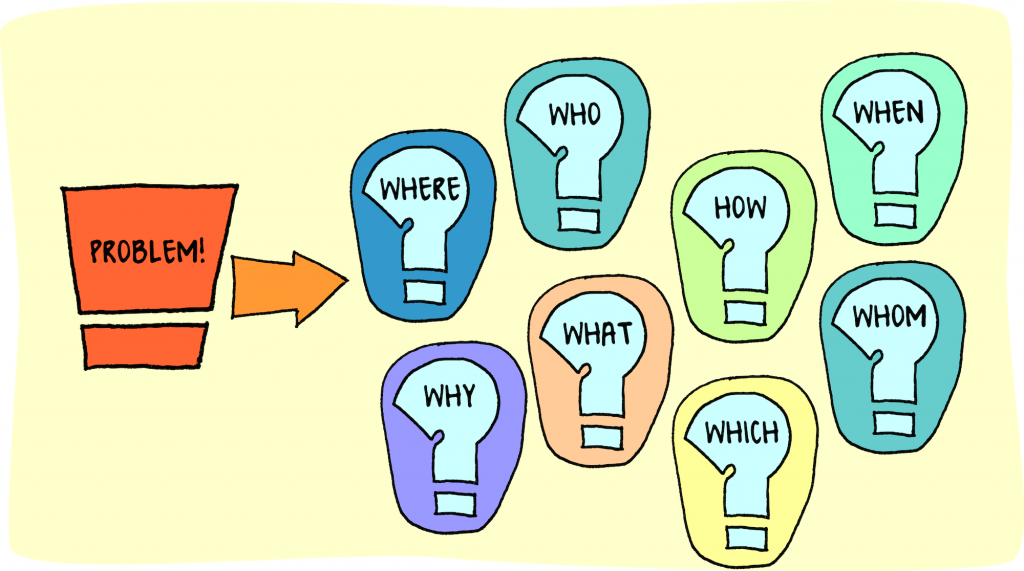
The ability to solve problems is a basic life skill and is essential to our day-to-day lives, at home, at school, and at work. We solve problems every day without really thinking about how we solve them. For example: it’s raining and you need to go to the store. What do you do? There are lots of possible solutions. Take your umbrella and walk. If you don’t want to get wet, you can drive, or take the bus. You might decide to call a friend for a ride, or you might decide to go to the store another day. There is no right way to solve this problem and different people will solve it differently.
Problem solving is the process of identifying a problem, developing possible solution paths, and taking the appropriate course of action.
Why is problem solving important? Good problem solving skills empower you not only in your personal life but are critical in your professional life. In the current fast-changing global economy, employers often identify everyday problem solving as crucial to the success of their organizations. For employees, problem solving can be used to develop practical and creative solutions, and to show independence and initiative to employers.
what does problem solving look like?
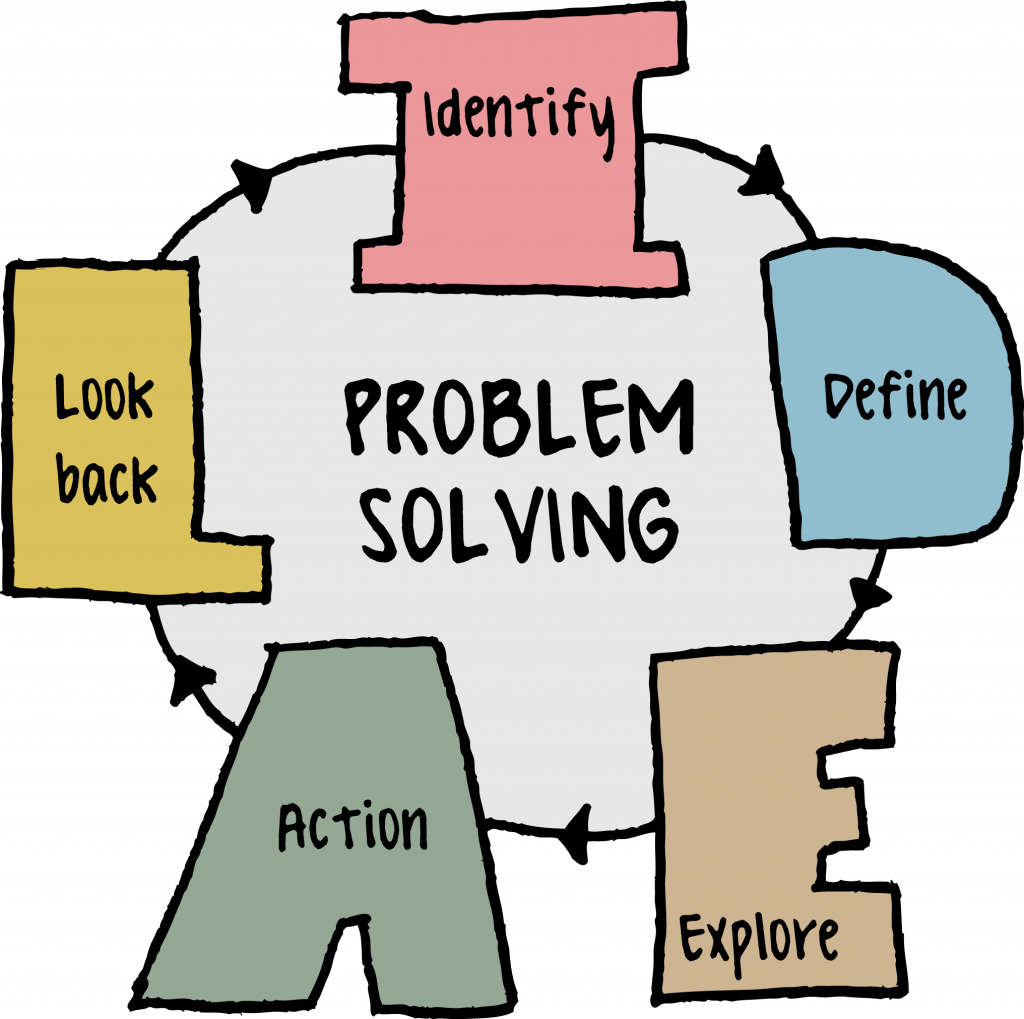
The ability to solve problems is a skill at which you can improve. So how exactly do you practice problem solving? Learning about different problem solving strategies and when to use them will give you a good start. Problem solving is a process. Most strategies provide steps that help you identify the problem and choose the best solution. There are two basic types of strategies: algorithmic and heuristic.
Algorithmic strategies are traditional step-by-step guides to solving problems. They are great for solving math problems (in algebra: multiply and divide, then add or subtract) or for helping us remember the correct order of things (a mnemonic such as “Spring Forward, Fall Back” to remember which way the clock changes for daylight saving time, or “Righty Tighty, Lefty Loosey” to remember what direction to turn bolts and screws). Algorithms are best when there is a single path to the correct solution.
But what do you do when there is no single solution for your problem? Heuristic methods are general guides used to identify possible solutions. A popular one that is easy to remember is IDEAL [Bransford & Stein [1] ] :
IDEAL is just one problem solving strategy. Building a toolbox of problem solving strategies will improve your problem solving skills. With practice, you will be able to recognize and use multiple strategies to solve complex problems.
What is the best way to get a peanut out of a tube that cannot be moved? Watch a chimpanzee solve this problem in the video below [Geert Stienissen [2] ].
Problem solving is a process that uses steps to solve problems. But what does that really mean? Let's break it down and start building our toolbox of problem solving strategies.
What is the first step of solving any problem? The first step is to recognize that there is a problem and identify the right cause of the problem. This may sound obvious, but similar problems can arise from different events, and the real issue may not always be apparent. To really solve the problem, it's important to find out what started it all. This is called identifying the root cause .
Example: You and your classmates have been working long hours on a project in the school's workshop. The next afternoon, you try to use your student ID card to access the workshop, but discover that your magnetic strip has been demagnetized. Since the card was a couple of years old, you chalk it up to wear and tear and get a new ID card. Later that same week you learn that several of your classmates had the same problem! After a little investigation, you discover that a strong magnet was stored underneath a workbench in the workshop. The magnet was the root cause of the demagnetized student ID cards.
The best way to identify the root cause of the problem is to ask questions and gather information. If you have a vague problem, investigating facts is more productive than guessing a solution. Ask yourself questions about the problem. What do you know about the problem? What do you not know? When was the last time it worked correctly? What has changed since then? Can you diagram the process into separate steps? Where in the process is the problem occurring? Be curious, ask questions, gather facts, and make logical deductions rather than assumptions.
When issues and problems arise, it is important that they are addressed in an efficient and timely manner. Communication is an important tool because it can prevent problems from recurring, avoid injury to personnel, reduce rework and scrap, and ultimately, reduce cost, and save money. Although, each path in this exercise ended with a description of a problem solving tool for your toolbox, the first step is always to identify the problem and define the context in which it happened.
There are several strategies that can be used to identify the root cause of a problem. Root cause analysis (RCA) is a method of problem solving that helps people answer the question of why the problem occurred. RCA uses a specific set of steps, with associated tools like the “5 Why Analysis" or the “Cause and Effect Diagram,” to identify the origin of the problem, so that you can:
Once the underlying cause is identified and the scope of the issue defined, the next step is to explore possible strategies to fix the problem.
If you are not sure how to fix the problem, it is okay to ask for help. Problem solving is a process and a skill that is learned with practice. It is important to remember that everyone makes mistakes and that no one knows everything. Life is about learning. It is okay to ask for help when you don’t have the answer. When you collaborate to solve problems you improve workplace communication and accelerates finding solutions as similar problems arise.
One tool that can be useful for generating possible solutions is brainstorming . Brainstorming is a technique designed to generate a large number of ideas for the solution to a problem. The goal is to come up with as many ideas as you can, in a fixed amount of time. Although brainstorming is best done in a group, it can be done individually.
Depending on your path through the exercise, you may have discovered that a couple of your coworkers had experienced similar problems. This should have been an indicator that there was a larger problem that needed to be addressed.
In any workplace, communication of problems and issues (especially those that involve safety) is always important. This is especially crucial in manufacturing where people are constantly working with heavy, costly, and sometimes dangerous equipment. When issues and problems arise, it is important that they be addressed in an efficient and timely manner. Because it can prevent problems from recurring, avoid injury to personnel, reduce rework and scrap, and ultimately, reduce cost and save money; effective communication is an important tool..
One strategy for improving communication is the huddle . Just like football players on the field, a huddle is a short meeting with everyone standing in a circle. It's always important that team members are aware of how their work impacts one another. A daily team huddle is a great way to ensure that as well as making team members aware of changes to the schedule or any problems or safety issues that have been identified. When done right, huddles create collaboration, communication, and accountability to results. Impromptu huddles can be used to gather information on a specific issue and get each team member's input.
"Never try to solve all the problems at once — make them line up for you one-by-one.” — Richard Sloma
Problem solving improves efficiency and communication on the shop floor. It increases a company's efficiency and profitability, so it's one of the top skills employers look for when hiring new employees. Employers consider professional skills, such as problem solving, as critical to their business’s success.
The 2011 survey, "Boiling Point? The skills gap in U.S. manufacturing [3] ," polled over a thousand manufacturing executives who reported that the number one skill deficiency among their current employees is problem solving, which makes it difficult for their companies to adapt to the changing needs of the industry.
- Bransford, J. & Stein, B.S. (). The Ideal Problem Solver: A Guide For Improving Thinking, Learning, And Creativity . New York, NY: W.H. Freeman. ↵
- National Geographic. [Geert Stienissen]. (2010, August 19). Insight learning: Chimpanzee Problem Solving [Video file]. Retrieved from http://www.youtube.com/watch?v=fPz6uvIbWZE ↵
- Report: Boiling Point: The Skills Gap in U.S. Manufacturing Deloitte / The Manufacturing Institute, October 2011. Retrieved from http://www.themanufacturinginstitute.org/Hidden/2011-Skills-Gap-Report/2011-Skills-Gap-Report.aspx ↵
Introduction to Industrial Engineering Copyright © 2020 by Bonnie Boardman is licensed under a Creative Commons Attribution 4.0 International License , except where otherwise noted.
Share This Book
- What is Chemical and Biological Engineering?
- Engineering problem solving
- Error and uncertainty
- Process variables
- Process Fundamentals
- Material Balances
- Reacting systems
- Reaction kinetics
- Reactor design
- Bioreactors
- Fluids and fluid flow
- Mass transfer
- Energy balances
- Heat transfer
- Heat exchangers
- Mechanical energy balances
- Process safety
- Engineering ethics
- Sustainability
- Engineering in a global context
- How ‘good’ a solution do you need
- Steps in solving well-defined engineering process problems, including textbook problems
- « What is Chemi...
- Teamwork »
Engineering Problem Solving ¶
Some problems are so complex that you have to be highly intelligent and well-informed just to be undecided about them. —Laurence J. Peter
Steps in solving ‘real world’ engineering problems ¶
The following are the steps as enumerated in your textbook:
Collaboratively define the problem
List possible solutions
Evaluate and rank the possible solutions
Develop a detailed plan for the most attractive solution(s)
Re-evaluate the plan to check desirability
Implement the plan
Check the results
A critical part of the analysis process is the ‘last’ step: checking and verifying the results.
Depending on the circumstances, errors in an analysis, procedure, or implementation can have significant, adverse consequences (NASA Mars orbiter crash, Bhopal chemical leak tragedy, Hubble telescope vision issue, Y2K fiasco, BP oil rig blowout, …).
In a practical sense, these checks must be part of a comprehensive risk management strategy.
My experience with problem solving in industry was pretty close to this, though encumbered by numerous business practices (e.g., ‘go/no-go’ tollgates, complex approval processes and procedures).
In addition, solving problems in the ‘real world’ requires a multidisciplinary effort, involving people with various expertise: engineering, manufacturing, supply chain, legal, marketing, product service and warranty, …
Exercise: Problem solving
Step 3 above refers to ranking of alternatives.
Think of an existing product of interest.
What do you think was ranked highest when the product was developed?
Consider what would have happened if a different ranking was used. What would have changed about the product?
Brainstorm ideas with the students around you.
Defining problems collaboratively ¶
Especially in light of global engineering , we need to consider different perspectives as we define our problem. Let’s break the procedure down into steps:
Identify each perspective that is involved in the decision you face. Remember that problems often mean different things in different perspectives. Relevant differences might include national expectations, organizational positions, disciplines, career trajectories, etc. Consider using the mnemonic device “Location, Knowledge, and Desire.”
Location : Who is defining the problem? Where are they located or how are they positioned? How do they get in their positions? Do you know anything about the history of their positions, and what led to the particular configuration of positions you have today on the job? Where are the key boundaries among different types of groups, and where are the alliances?
Knowledge : What forms of knowledge do the representatives of each perspective have? How do they understand the problem at hand? What are their assumptions? From what sources did they gain their knowledge? How did their knowledge evolve?
Desire : What do the proponents of each perspective want? What are their objectives? How do these desires develop? Where are they trying to go? Learn what you can about the history of the issue at hand. Who might have gained or lost ground in previous encounters? How does each perspective view itself at present in relation to those it envisions as relevant to its future?
As formal problem definitions emerge, ask “Whose definition is this?” Remember that “defining the problem clearly” may very well assert one perspective at the expense of others. Once we think about problem solving in relation to people, we can begin to see that the very act of drawing a boundary around a problem has non-technical, or political dimensions, depending on who controls the definition, because someone gains a little power and someone loses a little power.
Map what alternative problem definitions mean to different participants. More than likely you will best understand problem definitions that fit your perspective. But ask “Does it fit other perspectives as well?” Look at those who hold Perspective A. Does your definition fit their location, their knowledge, and their desires? Now turn to those who hold Perspective B. Does your definition fit their location, knowledge, and desires? Completing this step is difficult because it requires stepping outside of one’s own perspective and attempting to understand the problem in terms of different perspectives.
To the extent you encounter disagreement or conclude that the achievement of it is insufficient, begin asking yourself the following: How might I adapt my problem definition to take account of other perspectives out there? Is there some way of accommodating myself to other perspectives rather than just demanding that the others simply recognize the inherent value and rationality of mine? Is there room for compromise among contrasting perspectives?
How ‘good’ a solution do you need ¶
There is also an important aspect of real-world problem solving that is rarely articulated and that is the idea that the ‘quality’ of the analysis and the resources expended should be dependent on the context.
This is difficult to assess without some experience in the particular environment.
How ‘Good’ a Solution Do You Need?
Some rough examples:
10 second answer (answering a question at a meeting in front of your manager or vice president)
10 minute answer (answering a quick question from a colleague)
10 hour answer (answering a request from an important customer)
10 day answer (assembling information as part of a trouble-shooting team)
10 month answer (putting together a comprehensive portfolio of information as part of the design for a new $200,000,000 chemical plant)
Steps in solving well-defined engineering process problems, including textbook problems ¶
Essential steps:
Carefully read the problem statement (perhaps repeatedly) until you understand exactly the scenario and what is being asked.
Translate elements of the word problem to symbols. Also, look for key words that may convey additional information, e.g., ‘steady state’, ‘constant density’, ‘isothermal’. Make note of this additional information on your work page.
Draw a diagram. This can generally be a simple block diagram showing all the input, output, and connecting streams.
Write all known quantities (flow rates, densities, etc.) from step 2 in the appropriate locations on, or near, the diagram. If symbols are used to designate known quantities, include those symbols.
Identify and assign symbols to all unknown quantities and write them in the appropriate locations on, or near, the diagram.
Construct the relevant equation(s). These could be material balances, energy balances, rate equations, etc.
Write down all equations in their general forms. Don’t simplify anything yet.
Discard terms that are equal to zero (or are assumed negligible) for your specific problem and write the simplified equations.
Replace remaining terms with more convenient forms (because of the given information or selected symbols).
Construct equations to express other known relationships between variables, e.g., relationships between stoichiometric coefficients, the sum of species mass fractions must be one.
Whenever possible, solve the equations for the unknown(s) algebraically .
Convert the units of your variables as needed to have a consistent set across your equations.
Substitute these values into the equation(s) from step 7 to get numerical results.
Check your answer.
Does it make sense?
Are the units of the answer correct?
Is the answer consistent with other information you have?
Exercise: Checking results
How do you know your answer is right and that your analysis is correct?
This may be relatively easy for a homework problem, but what about your analysis for an ill-defined ‘real-world’ problem?
- Professional
- International
Select a product below:
- Connect Math Hosted by ALEKS
- My Bookshelf (eBook Access)
Sign in to Shop:
Log In to My PreK-12 Platform
- AP/Honors & Electives
- my.mheducation.com
- Open Learning Platform
Log In to My Higher Ed Platform
- Connect Math Hosted by Aleks
Business and Economics
Accounting Business Communication Business Law Business Mathematics Business Statistics & Analytics Computer & Information Technology Decision Sciences & Operations Management Economics Finance Keyboarding Introduction to Business Insurance and Real Estate Management Information Systems Management Marketing Student Success
Humanities, Social Science and Language
American Government Anthropology Art Career Development Communication Criminal Justice Developmental English Education Film Composition Health and Human Performance
History Humanities Music Philosophy and Religion Psychology Sociology Student Success Theater World Languages
Science, Engineering and Math
Agriculture and Forestry Anatomy & Physiology Astronomy and Physical Science Biology - Majors Biology - Non-Majors Chemistry Cell/Molecular Biology and Genetics Earth & Environmental Science Ecology Engineering/Computer Science Engineering Technologies - Trade & Tech Health Professions Mathematics Microbiology Nutrition Physics Plants and Animals
Digital Products
Connect® Course management , reporting , and student learning tools backed by great support .
McGraw Hill GO Greenlight learning with the new eBook+
ALEKS® Personalize learning and assessment
ALEKS® Placement, Preparation, and Learning Achieve accurate math placement
SIMnet Ignite mastery of MS Office and IT skills
McGraw Hill eBook & ReadAnywhere App Get learning that fits anytime, anywhere
Sharpen: Study App A reliable study app for students
Virtual Labs Flexible, realistic science simulations
Inclusive Access Reduce costs and increase success
LMS Integration Log in and sync up
Math Placement Achieve accurate math placement
Content Collections powered by Create® Curate and deliver your ideal content
Custom Courseware Solutions Teach your course your way
Professional Services Collaborate to optimize outcomes
Remote Proctoring Validate online exams even offsite
Institutional Solutions Increase engagement, lower costs, and improve access for your students
General Help & Support Info Customer Service & Tech Support contact information
Online Technical Support Center FAQs, articles, chat, email or phone support
Support At Every Step Instructor tools, training and resources for ALEKS , Connect & SIMnet
Instructor Sample Requests Get step by step instructions for requesting an evaluation, exam, or desk copy
Platform System Check System status in real time
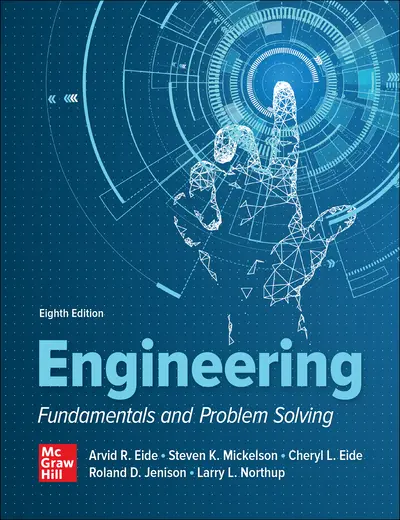
Engineering Fundamentals and Problem Solving
Format options:.
Lowest Price!
- Print from $70.00
- Connect from $121.34
- GO from $75.00
McGraw Hill eBook
- Highlight, take notes, and search
- Download the free ReadAnywhere app for offline and mobile access
Watch to learn more about the eBook
Textbook Rental (150 Days Access)
- Rent for a fraction of the printed textbook price
- Complete text bound in hardcover or softcover
Loose-Leaf Purchase
Unbound loose-leaf version of full text
Shipping Options
- Next-day air
- 2nd-day air
Orders within the United States are shipped via FedEx or UPS Ground. For shipments to locations outside of the U.S., only standard shipping is available. All shipping options assume the product is available and that processing an order takes 24 to 48 hours prior to shipping.
Note: Connect can only be used if assigned by your instructor.
Connect (180 Days Access)
- Digital access to a comprehensive online learning platform
- Includes homework , study tools , eBook, and adaptive assignments
- Download the free ReadAnywhere app to access the eBook offline
Connect + Loose-Leaf
- Comprehensive online learning platform + unbound loose-leaf print text package
- Connect includes homework , study tools, eBook, and adaptive assignments
McGraw Hill GO (180 Days Access)
- Digital access to eBook+ embedded in your school's Learning Management System (LMS)
- Includes full eBook and chapter questions
- Download the free ReadAnywhere app for offline and mobile access
* The estimated amount of time this product will be on the market is based on a number of factors, including faculty input to instructional design and the prior revision cycle and updates to academic research-which typically results in a revision cycle ranging from every two to four years for this product. Pricing subject to change at any time.
Instructor Information
Quick Actions ( Only for Validated Instructor Accounts ):
- Table of Contents
- Digital Platform
- Author Bios
- Accessibility
Affordability
Engineering Fundamentals and Problem Solving presents a complete introduction to the engineering field and remains the most comprehensive textbook for an introductory engineering course. This text helps students develop the skills needed to solve open-ended problems in SI and customary units while presenting solutions in a logical manner. Students are introduced to subject areas, common to engineering disciplines, that require the application of fundamental engineering concepts. This edition is available in Connect with SmartBook, and offers features such as video questions and the MHeBook.
Main Features
- LMS Integration
- Print/Loose-Leaf Book Add-On Availability
- Presentation Slides & Instructor Resources
- Question & Test Banks
- Adaptive Assignments
- Student Progress Reporting & Analytics
- Essay Prompts
- Prebuilt Courses
- Interactive Exercises
- eBook Access (ReadAnywhere App)
- Remote Proctoring (Proctorio)
- Subject-Specific Tools
- Quick Setup
- Lives within the LMS
- Assignable Readings
- Auto-Graded Chapter Questions
About the Author
Arvid R. Eide received his baccalaureate degree in mechanical engineering from Iowa State University. Upon graduation he spent two years in the U.S. Army as a commissioned officer and then returned to Iowa State as an instructor while completing a master’s degree in mechanical engineering. Professor Eide has worked for Western Electric, John Deere, and the Trane Company. He received his Ph.D. in 1974 and was appointed professor and Chair of Freshman Engineering, a position he held from 1974 to 1989, at which time Dr. Eide was appointed Associate Dean of Academic Affairs. In 1996, he returned to teaching as a professor of mechanical engineering. In January 2000 he retired from Iowa State University as professor emeritus of mechanical engineering.
Steven Mickelson
Steven K. Mickelson is the Chuck R. and Jane F. Olsen Professor of Engineering at Iowa State University. His tenure home is in the Department of Agricultural and Biosystems Engineering (ABE). Dr. Mickelson was the Chair for the ABE department from 2011 to 2021. He is currently the Special Advisor to the Senior Vice President and Provost, co-leading the roleout of Iowa State University’s new student information and receivable system. His teaching specialties include computer-aided graphics, engineering problem solving, engineering design, and soil and water conservation engineering. His research areas include evaluation of best management practices for reducing surface and groundwater contamination, manure management evaluation for environmental protection of water resources, and the scholarship of teaching and learning. Dr. Mickelson has been very active in the American Society for Engineering Education and the American Society of Agricultural and Biosystems Engineers for the past 40 years. He received his agricultural engineering degrees from Iowa State University in 1982, 1984, and 1991. He is a fellow within the American Society for Agricultural and Biological Engineers.
Cheryl L. Eide
Cheryl L. Eide has worked with undergraduate student recruitment, retention, advising, and the development of programs to support women and minorities pursuing engineering. Her teaching portfolio includes engineering fundamentals and problem solving, engineering economy, material handling, factory layout, and computer simulation. Dr. Eide helped to re-activate and charter the Heart of Iowa Section of the Society of Women Engineers (SWE) and served as the faculty advisor to the Iowa State SWE student section. She is a member of the Cardinal Key Honor Society, which recognizes outstanding leadership, character, service, and scholarship at Iowa State University where Dr. Eide earned her bachelor’s, master’s, and doctorate degrees.
Roland Jenison
Roland D. (Rollie) Jenison taught for 35 years in aerospace engineering and lower-division general engineering. He taught courses in engineering problem solving, engineering design graphics, aircraft performance, and aircraft stability and control, in addition to serving as academic adviser to many engineering students. He was a member of the American Society for Engineering Education (ASEE) and the American Institute of Aeronautics and Astronautics (AIAA), and published numerous papers on engineering education. He served as chair of the Engineering Design Graphics Division of ASEE in 1986–1987. He was active in the development of improved teaching methodologies through the application of team learning, hands-on projects, and open-ended problem solving. He retired in June 2000 as professor emeritus in the Department of Aerospace Engineering and Engineering Mechanics at Iowa State University.
Larry Northup
Larry L. Northup is a professor emeritus of civil, construction, and environmental engineering at Iowa State University. He has 40 years of teaching experience, with 25 years devoted to lower-division engineering courses in problem solving, graphics, and design. He has two years of industrial experience and is a registered engineer in Iowa. He has been active in ASEE (Engineering Design Graphics Division), having served as chair of the Freshman Year Committee and Director of Technical and Professional Committees (1981–1984). He also served as chair of the Freshman Programs Constituent Committee of ASEE in 1983–1984.
Creating accessible products is a priority for McGraw Hill. We make accessibility and adhering to WCAG AA guidelines a part of our day-to-day development efforts and product roadmaps.
For more information, visit our accessibility page , or contact us at [email protected]
Reduce course material costs for your students while still providing full access to everything they need to be successful. It isn't too good to be true - it's Inclusive Access.
Need support? We're here to help - Get real-world support and resources every step of the way.
Company Info
- Contact & Locations
- Diversity, Equity & Inclusion
- Social Responsibility
- Investor Relations
- Social Media Directory
- Place an Order
- Get Support
- Contact Customer Service
- Contact Sales Rep
- Check System Status
Additional Resources
- Permissions
- Author Support
- International Rights
- Purchase Order
Follow McGraw Hill:
©2024 McGraw Hill. All Rights Reserved.
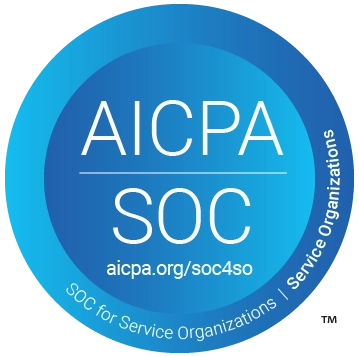
- Even more »
Account Options

- Try the new Google Books
- Advanced Book Search
- Barnes&Noble.com
- Books-A-Million
- Find in a library
- All sellers »

Get Textbooks on Google Play
Rent and save from the world's largest eBookstore. Read, highlight, and take notes, across web, tablet, and phone.
Go to Google Play Now »
Other editions - View all
About the author (2017), bibliographic information.
Engineering Fundamentals and Problem Solving, 6/e
Engineering Fundamentals & Problem Solving is written to motivate engineering students during their first year.
A complete introduction to the engineering field, this text will help students develop the skills to solving open-ended problems in SI and customary units while presenting solutions in a logical manner. Eide introduces students to subject areas that are common to engineering disciplines that require the application of fundamental engineering concepts.
While not every course will cover all the topics in this text, McGraw-Hill is proud to offer Create , which will allow you to select the material you need from this text and many others in our B.E.S.T. series for freshman engineering so you can create materials exactly suited to your course. For more information, please go to the Create website or contact your sales representative.

Tips for Solving Engineering Problems Effectively
Problem solving is the process of determining the best feasible action to take in a given situation. Problem solving is an essential skill for engineers to have. Engineers are problem solvers, as the popular quote says:
“Engineers like to solve problems. If there are no problems handily available, they will create their own problems.” – Scott Adams
Engineers are faced with a range of problems in their everyday life. The nature of problems that engineers must solve differs between and among the various disciplines of engineering. Because of the diversity of problems there is no universal list of procedures that will fit every engineering problem. Engineers use various approaches while solving problems.
Engineering problems must be approached systematically, applying an algorithm, or step-by-step practice by which one arrives at a feasible solution. In this post, we’ve prepared a list of tips for solving engineering problems effectively.
#1 Identify the Problem

Evaluating the needs or identifying the problem is a key step in finding a solution for engineering problems. Recognize and describe the problem accurately by exploring it thoroughly. Define what question is to be answered and what outputs or results are to be produced. Also determine the available data and information about the problem in hand.
An improper definition of the problem will cause the engineer to waste time, lengthen the problem solving process and finally arrive at an incorrect solution. It is essential that the stated needs be real needs.
As an engineer, you should also be careful not to make the problem pointlessly bound. Placing too many limitations on the problem may make the solution extremely complex and tough or impossible to solve. To put it simply, eliminate the unnecessary details and only keep relevant details and the root problem.
#2 Collect Relevant Information and Data

After defining the problem, an engineer begins to collect all the relevant information and data needed to solve the problem. The collected data could be physical measurements, maps, outcomes of laboratory experiments, patents, results of conducted surveys, or any number of other types of information. Verify the accuracy of the collected data and information.
As an engineer, you should always try to build on what has already been done before. Don’t reinvent the wheel. Information on related problems that have been solved or unsolved earlier, may help engineers find the optimal solution for a given problem.
#3 Search for Creative Solutions

There are a number of methods to help a group or individual to produce original creative ideas. The development of these new ideas may come from creativity, a subconscious effort, or innovation, a conscious effort.
You can try to visualize the problem or make a conceptual model for the given problem. So think of visualizing the given problem and see if that can help you gain more knowledge about the problem.
#4 Develop a Mathematical Model

Mathematical modeling is the art of translating problems from an application area into tractable mathematical formulations whose theoretical and numerical analysis provides insight, answers, and guidance useful for the originating application.
To develop a mathematical model for the problem, determine what basic principles are applicable and then draw sketches or block diagrams to better understand the problem. Then define and introduce the necessary variables so that the problem is stated purely in mathematical terms.
Afterwards, simplify the problem so that you can obtain the required result. Also identify the and justify the assumptions and constraints in the mathematical model.
#5 Use Computational Method

You can use a computational method based on the mathematical method you’ve developed for the problem. Derive a set of equations that enable the calculation of the desired parameters and variables as described in your mathematical model. You can also develop an algorithm, or step-by-step procedure of evaluating the equations involved in the solution.
To do so, describe the algorithm in mathematical terms and then execute it as a computer program.
#6 Repeat the Problem Solving Process

Not every problem solving is immediately successful. Problems aren’t always solved appropriately the first time. You’ve to rethink and repeat the problem solving process or choose an alternative solution or approach to solving the problem.
Bottom-line:
Engineers often use the reverse-engineering method to solve problems. For example, by taking things apart to identify a problem, finding a solution and then putting the object back together again. Engineers are creative , they know how things work, and so they constantly analyze things and discover how they work.
Problem-solving skills help you to resolve obstacles in a situation. As stated earlier, problem solving is a skill that an engineer must have and fortunately it’s a skill that can be learned. This skill gives engineers a mechanism for identifying things, figuring out why they are broken and determining a course of action to fix them.
Subscribe Now!
Get our latest news, eBooks, tutorials, and free courses straight into your inbox.

Types of Engineers and What they Do [Explained]
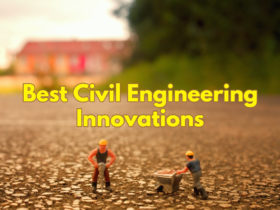
Latest innovations in civil engineering and construction industry

Civil Engineering: The Hardest Engineering Degree?
- Education & Career 34
- Industry 24
- Technology 18
GET OUR APP

Engineering Resources
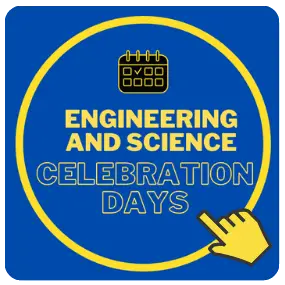
Everything you need to know about National Space Day

Is Electrical Engineering Hard? Here’s What You Need to Know

What Is Problem Solving? How Software Engineers Approach Complex Challenges

From debugging an existing system to designing an entirely new software application, a day in the life of a software engineer is filled with various challenges and complexities. The one skill that glues these disparate tasks together and makes them manageable? Problem solving .
Throughout this blog post, we’ll explore why problem-solving skills are so critical for software engineers, delve into the techniques they use to address complex challenges, and discuss how hiring managers can identify these skills during the hiring process.
What Is Problem Solving?
But what exactly is problem solving in the context of software engineering? How does it work, and why is it so important?
Problem solving, in the simplest terms, is the process of identifying a problem, analyzing it, and finding the most effective solution to overcome it. For software engineers, this process is deeply embedded in their daily workflow. It could be something as simple as figuring out why a piece of code isn’t working as expected, or something as complex as designing the architecture for a new software system.
In a world where technology is evolving at a blistering pace, the complexity and volume of problems that software engineers face are also growing. As such, the ability to tackle these issues head-on and find innovative solutions is not only a handy skill — it’s a necessity.
The Importance of Problem-Solving Skills for Software Engineers
Problem-solving isn’t just another ability that software engineers pull out of their toolkits when they encounter a bug or a system failure. It’s a constant, ongoing process that’s intrinsic to every aspect of their work. Let’s break down why this skill is so critical.
Driving Development Forward
Without problem solving, software development would hit a standstill. Every new feature, every optimization, and every bug fix is a problem that needs solving. Whether it’s a performance issue that needs diagnosing or a user interface that needs improving, the capacity to tackle and solve these problems is what keeps the wheels of development turning.
It’s estimated that 60% of software development lifecycle costs are related to maintenance tasks, including debugging and problem solving. This highlights how pivotal this skill is to the everyday functioning and advancement of software systems.
Innovation and Optimization
The importance of problem solving isn’t confined to reactive scenarios; it also plays a major role in proactive, innovative initiatives . Software engineers often need to think outside the box to come up with creative solutions, whether it’s optimizing an algorithm to run faster or designing a new feature to meet customer needs. These are all forms of problem solving.
Consider the development of the modern smartphone. It wasn’t born out of a pre-existing issue but was a solution to a problem people didn’t realize they had — a device that combined communication, entertainment, and productivity into one handheld tool.
Increasing Efficiency and Productivity
Good problem-solving skills can save a lot of time and resources. Effective problem-solvers are adept at dissecting an issue to understand its root cause, thus reducing the time spent on trial and error. This efficiency means projects move faster, releases happen sooner, and businesses stay ahead of their competition.
Improving Software Quality
Problem solving also plays a significant role in enhancing the quality of the end product. By tackling the root causes of bugs and system failures, software engineers can deliver reliable, high-performing software. This is critical because, according to the Consortium for Information and Software Quality, poor quality software in the U.S. in 2022 cost at least $2.41 trillion in operational issues, wasted developer time, and other related problems.
Problem-Solving Techniques in Software Engineering
So how do software engineers go about tackling these complex challenges? Let’s explore some of the key problem-solving techniques, theories, and processes they commonly use.
Decomposition
Breaking down a problem into smaller, manageable parts is one of the first steps in the problem-solving process. It’s like dealing with a complicated puzzle. You don’t try to solve it all at once. Instead, you separate the pieces, group them based on similarities, and then start working on the smaller sets. This method allows software engineers to handle complex issues without being overwhelmed and makes it easier to identify where things might be going wrong.
Abstraction
In the realm of software engineering, abstraction means focusing on the necessary information only and ignoring irrelevant details. It is a way of simplifying complex systems to make them easier to understand and manage. For instance, a software engineer might ignore the details of how a database works to focus on the information it holds and how to retrieve or modify that information.
Algorithmic Thinking
At its core, software engineering is about creating algorithms — step-by-step procedures to solve a problem or accomplish a goal. Algorithmic thinking involves conceiving and expressing these procedures clearly and accurately and viewing every problem through an algorithmic lens. A well-designed algorithm not only solves the problem at hand but also does so efficiently, saving computational resources.
Parallel Thinking
Parallel thinking is a structured process where team members think in the same direction at the same time, allowing for more organized discussion and collaboration. It’s an approach popularized by Edward de Bono with the “ Six Thinking Hats ” technique, where each “hat” represents a different style of thinking.
In the context of software engineering, parallel thinking can be highly effective for problem solving. For instance, when dealing with a complex issue, the team can use the “White Hat” to focus solely on the data and facts about the problem, then the “Black Hat” to consider potential problems with a proposed solution, and so on. This structured approach can lead to more comprehensive analysis and more effective solutions, and it ensures that everyone’s perspectives are considered.
This is the process of identifying and fixing errors in code . Debugging involves carefully reviewing the code, reproducing and analyzing the error, and then making necessary modifications to rectify the problem. It’s a key part of maintaining and improving software quality.
Testing and Validation
Testing is an essential part of problem solving in software engineering. Engineers use a variety of tests to verify that their code works as expected and to uncover any potential issues. These range from unit tests that check individual components of the code to integration tests that ensure the pieces work well together. Validation, on the other hand, ensures that the solution not only works but also fulfills the intended requirements and objectives.
Explore verified tech roles & skills.
The definitive directory of tech roles, backed by machine learning and skills intelligence.
Explore all roles
Evaluating Problem-Solving Skills
We’ve examined the importance of problem-solving in the work of a software engineer and explored various techniques software engineers employ to approach complex challenges. Now, let’s delve into how hiring teams can identify and evaluate problem-solving skills during the hiring process.
Recognizing Problem-Solving Skills in Candidates
How can you tell if a candidate is a good problem solver? Look for these indicators:
- Previous Experience: A history of dealing with complex, challenging projects is often a good sign. Ask the candidate to discuss a difficult problem they faced in a previous role and how they solved it.
- Problem-Solving Questions: During interviews, pose hypothetical scenarios or present real problems your company has faced. Ask candidates to explain how they would tackle these issues. You’re not just looking for a correct solution but the thought process that led them there.
- Technical Tests: Coding challenges and other technical tests can provide insight into a candidate’s problem-solving abilities. Consider leveraging a platform for assessing these skills in a realistic, job-related context.

Assessing Problem-Solving Skills
Once you’ve identified potential problem solvers, here are a few ways you can assess their skills:
- Solution Effectiveness: Did the candidate solve the problem? How efficient and effective is their solution?
- Approach and Process: Go beyond whether or not they solved the problem and examine how they arrived at their solution. Did they break the problem down into manageable parts? Did they consider different perspectives and possibilities?
- Communication: A good problem solver can explain their thought process clearly. Can the candidate effectively communicate how they arrived at their solution and why they chose it?
- Adaptability: Problem-solving often involves a degree of trial and error. How does the candidate handle roadblocks? Do they adapt their approach based on new information or feedback?
Hiring managers play a crucial role in identifying and fostering problem-solving skills within their teams. By focusing on these abilities during the hiring process, companies can build teams that are more capable, innovative, and resilient.
Key Takeaways
As you can see, problem solving plays a pivotal role in software engineering. Far from being an occasional requirement, it is the lifeblood that drives development forward, catalyzes innovation, and delivers of quality software.
By leveraging problem-solving techniques, software engineers employ a powerful suite of strategies to overcome complex challenges. But mastering these techniques isn’t simple feat. It requires a learning mindset, regular practice, collaboration, reflective thinking, resilience, and a commitment to staying updated with industry trends.
For hiring managers and team leads, recognizing these skills and fostering a culture that values and nurtures problem solving is key. It’s this emphasis on problem solving that can differentiate an average team from a high-performing one and an ordinary product from an industry-leading one.
At the end of the day, software engineering is fundamentally about solving problems — problems that matter to businesses, to users, and to the wider society. And it’s the proficient problem solvers who stand at the forefront of this dynamic field, turning challenges into opportunities, and ideas into reality.
This article was written with the help of AI. Can you tell which parts?
Get started with HackerRank
Over 2,500 companies and 40% of developers worldwide use HackerRank to hire tech talent and sharpen their skills.
Recommended topics
- Hire Developers
- Problem Solving

Does a College Degree Still Matter for Developers in 2024?

Engineer's Planet
Mtech, Btech Projects, PhD Thesis and Research Paper Writing Services in Delhi
Exploring the engineering mindset: Problem solving strategies.
Students, engineers and other people often use problem-solving and problem-solving strategies almost every day in their life. They are introduced to problem-solving by demonstrating real-life applications and finding their solutions. These problem-solving strategies provide a rather systematic procedure to solve a problem that is efficient as well as gives a logical flow and makes them understand it well.
Exploring engineering mindset
Let’s look at some problem-solving strategies that make it easier for engineers to explore, understand and effortlessly solve the problem.
Defining the problem
For any given problem it must be very important to figure out and define the problem well. Collaboratively defining a problem will help engineering students understand the given problem well. Problem-defining or identifying is extremely difficult but also a very essential step.
It involves focusing on the real problem after diagnosing the situation. Identifying the problem makes it easier to list the possible solution, and also in turn saves our time, extra effort and money. Every engineering student should master defining a problem, and this needs a lot of patience and practice.
Furthermore, how a student frames his/her problem will assist their search for a possible solution.
Listing all the possible solutions –
Once, the problem is well understood and defined, the next step is to list all the possible solutions. By listing and brainstorming viable, possible and as many solutions as possible you can assist yourself effortlessly to find the ideal solution.
It is important to consider many suggestions provided while brainstorming for ideas as well as the information you’ve learned while analyzing the data. Some other things that help while listing all the possible solutions are receiving help from mentors, peers and teachers because they might have some more solutions that you might have not thought of.
Evaluating the listed solution
After creating a list of all the possible solutions, evaluate the list and understand which of that solutions will be the most feasible.
To make that part of the step easier you can, also speculate the positive and negative impact of each listed solution. Then once that part is done compare and analyze the report. You’ll be able to apprehend which of the following listed solutions is the most attainable one.
Make sure the selected solution does not have any loopholes. So that it can be implemented simply, efficiently and is also very practical.
Developing a plan for the most feasible solution
Once we have a practical and simple solution that will help you solve the problem, develop a plan for the same. It is significant to find a way to work around the solution, this makes our work a lot more uncomplicated.
The plan to solve the problem using the obtained solution should be smart, attainable, and relevant. The chosen strategy must be hassle-free to work with, no matter how new the problem and its concept are.
Re-checking the strategy chosen for solving the problem
It is very necessary to recheck the strategy we have chosen to solve our problem. It helps in more than one way like avoiding doing extra work, and ensuring we are using the correct strategy etc. Even if we are very confident about our strategy just confirming and rechecking proves beneficial.
As Camay said, ‘Check, double check, recheck’; so it is always better to do so. Students often ignore this step but sometimes this might disrupt the flow in later steps if the chosen strategy does not work out as we thought. Or maybe it turns out to be difficult to implement.
Once, we recheck we will be confident since that will reduce the chances of any further difficulty and then we can move on to the next step which is implementing the solution.
Implementing the solution
Now, after being done with all the above steps we finally get a good strategy for our problem. Hence, we can now implement the solution.
It is essential to be careful while executing the solution. Small things like paying attention to details, and the completion of all the work are also significant. Also while implementing the solution do keep a check on the action and analyze it well. How we carry out the solution will put an impact on the result we get.
After we complete this step, we can then move to the last step.
Checking the result
Once we implement the solution, we need to evaluate and check our results. Checking how effective the strategy was. Also, check if the current strategy solves the problem well or if the existing plan needs to be revised. Or maybe we need a new and better plan.
Since we have already rechecked our solution earlier there is a very chance to make any changes. But if you are not satisfied with the current strategy and its outcome you can still repeat from step two. So, that you can get the best possible strategy giving us the best solution.
Even though we do problem-solving almost every day it can sometimes it can be a little difficult. Easy problems can be solved easily without much use of the above-listed steps.
But for engineering students, mostly the problem they have to solve academically or in college life could turn out to be difficult. As well as something that needs good planning. In such cases, the above given described steps could be very useful.
This will help the mind of the students to be at peace and with less stress. So try using it for one of the problems and see if it helps.
Leave a Reply Cancel reply
This site uses Akismet to reduce spam. Learn how your comment data is processed .
Problem Solving and Mathematical Modeling
- First Online: 11 January 2023
Cite this chapter

- Parikshit Narendra Mahalle 7 ,
- Nancy Ambritta P. 8 ,
- Sachin R. Sakhare 9 &
- Atul P. Kulkarni 10
Part of the book series: Studies in Autonomic, Data-driven and Industrial Computing ((SADIC))
180 Accesses
A problem is a puzzle or task that requires a logical thought process or fundamental mathematical steps to solve it. The puzzle generally represents the set of questions on the underlined use case which also consist of complete description of the use case along with the set of constraints about the use case. Logic is very importantly used to solve the puzzle or problem. Logic is defined as a method of human thought that involves thinking in a linear, step-by-step manner about how a problem can be solved. Logic is a subjective matter and varies from person to person. Logic is directly linked to the natural intelligence of human being and is a language of reasoning. Logic also represents the set of rules we use when we do reasoning. It is observed that majority of the employment of fresh engineering graduates across the globe is in software and information technology sector.
This is a preview of subscription content, log in via an institution to check access.
Access this chapter
- Available as PDF
- Read on any device
- Instant download
- Own it forever
- Available as EPUB and PDF
- Compact, lightweight edition
- Dispatched in 3 to 5 business days
- Free shipping worldwide - see info
- Durable hardcover edition
Tax calculation will be finalised at checkout
Purchases are for personal use only
Institutional subscriptions
Rao ORS Hiring trends of fresh engineering graduates. Report in engineering special
Google Scholar
https://www.linkedin.com/pulse/story-fresh-engineering-graduate-indrani-mukherjee/
Joshi SA, Mahalle PN (2016) Design and analysis of algorithms: a problem solving approach. Cambridge University Press, India, p 209
TOCICO Board of Directors—Theory of constraints international certification organization. www.tocico.org . Retrieved 17 Mar 2018
Dettmer HW (2007) The logical thinking process: a systems approach to complex problem solving. ISBN: 978-0-87389-723-5
Pólya G (1945) How to solve it. Princeton University Press. ISBN: 0-691-08097-6
Dormy RG (2005) How to solve it by computers. Prentice Hall
Levitin A (2005) Introduction to design and analysis of algorithms. Pearson Education Press
Frejd P (2014) Modes of mathematical modelling: an analysis of how modelling is used and interpreted in and out of school settings. Linköping University
Blum W (2015) Quality teaching of mathematical modelling: what do we know, what can we do? In: Cho S (eds) The proceedings of the 12th international congress on mathematical education. Springer, Cham. https://doi.org/10.1007/978-3-319-12688-3_9
Ball DL, Hill HC, Bass H (2005) Knowing mathematics for teaching. Am Educ 29(3):14–46
Biccard P, Wessels DCJ (2011) Documenting the development of modelling competencies of grade 7 students. In: Kaiser G et al (eds) Trends in teaching and learning of mathematical modelling (ICTMA 14). Springer, Dordrecht, pp 375–383
Chapter Google Scholar
Kantner J (2008) The only absolute truth in mathematics is the myth of mathematics as universal. Perspect: N Y J Adult Learn 6(2). Retrieved from http://www.eric.ed.gov/PDFS/ED501486.pdf
Download references
Author information
Authors and affiliations.
Department of Artificial Intelligence and Data Science, Vishwakarma Institute of Information Technology, Pune, India
Parikshit Narendra Mahalle
Glareal Software Solutions PTE. Ltd., Singapore, Singapore
Nancy Ambritta P.
Department of Computer Engineering, Vishwakarma Institute of Information Technology, Pune, India
Sachin R. Sakhare
Department of Mechanical Engineering, Vishwakarma Institute of Information Technology, Pune, India
Atul P. Kulkarni
You can also search for this author in PubMed Google Scholar
Corresponding author
Correspondence to Nancy Ambritta P. .
Rights and permissions
Reprints and permissions
Copyright information
© 2023 The Author(s), under exclusive license to Springer Nature Singapore Pte Ltd.
About this chapter
Mahalle, P.N., Ambritta P., N., Sakhare, S.R., Kulkarni, A.P. (2023). Problem Solving and Mathematical Modeling. In: Foundations of Mathematical Modelling for Engineering Problem Solving. Studies in Autonomic, Data-driven and Industrial Computing. Springer, Singapore. https://doi.org/10.1007/978-981-19-8828-8_2
Download citation
DOI : https://doi.org/10.1007/978-981-19-8828-8_2
Published : 11 January 2023
Publisher Name : Springer, Singapore
Print ISBN : 978-981-19-8827-1
Online ISBN : 978-981-19-8828-8
eBook Packages : Intelligent Technologies and Robotics Intelligent Technologies and Robotics (R0)
Share this chapter
Anyone you share the following link with will be able to read this content:
Sorry, a shareable link is not currently available for this article.
Provided by the Springer Nature SharedIt content-sharing initiative
- Publish with us
Policies and ethics
- Find a journal
- Track your research

- Engineering & Transportation
- Engineering
Buy new: .savingPriceOverride { color:#CC0C39!important; font-weight: 300!important; } .reinventMobileHeaderPrice { font-weight: 400; } #apex_offerDisplay_mobile_feature_div .reinventPriceSavingsPercentageMargin, #apex_offerDisplay_mobile_feature_div .reinventPricePriceToPayMargin { margin-right: 4px; } -23% $224.38 $ 224 . 38 FREE delivery May 7 - 8 Ships from: Basi6 International Sold by: Basi6 International
Save with used - acceptable .savingpriceoverride { color:#cc0c39important; font-weight: 300important; } .reinventmobileheaderprice { font-weight: 400; } #apex_offerdisplay_mobile_feature_div .reinventpricesavingspercentagemargin, #apex_offerdisplay_mobile_feature_div .reinventpricepricetopaymargin { margin-right: 4px; } $196.47 $ 196 . 47 free delivery monday, may 6 ships from: amazon sold by: rockcitybooks, return this item for free.
Free returns are available for the shipping address you chose. You can return the item for any reason in new and unused condition: no shipping charges
- Go to your orders and start the return
- Select the return method

Download the free Kindle app and start reading Kindle books instantly on your smartphone, tablet, or computer - no Kindle device required .
Read instantly on your browser with Kindle for Web.
Using your mobile phone camera - scan the code below and download the Kindle app.

Image Unavailable

- To view this video download Flash Player
Engineering Fundamentals and Problem Solving 7th Edition
There is a newer edition of this item:.

Purchase options and add-ons
Engineering Fundamentals & Problem Solving presents a complete introduction into the engineering field and remains the most comprehensive textbook for an introductory engineering course. This text will help students develop the skills needed to solve open-ended problems in SI and customary units while presenting solutions in a logical manner. Students are introduced to subject areas, common to engineering disciplines, that require the application of fundamental engineering concepts. Engineering Fundamentals & Problem Solving provides students a realistic opportunity to learn to apply engineering principles to the solution of engineering problems. Furthermore, the author's approach keeps students on task toward an engineering career by showing how the materials apply to the student's school, life, and career.
McGraw-Hill's Connect, is also available as an optional, add on item. Connect is the only integrated learning system that empowers students by continuously adapting to deliver precisely what they need, when they need it, how they need it, so that class time is more effective. Connect allows the professor to assign homework, quizzes, and tests easily and automatically grades and records the scores of the student's work. Problems are randomized to prevent sharing of answers an may also have a "multi-step solution" which helps move the students' learning along if they experience difficulty.
- ISBN-10 0073385913
- ISBN-13 978-0073385914
- Edition 7th
- Publisher McGraw Hill
- Publication date January 26, 2017
- Language English
- Dimensions 7.25 x 1 x 9.25 inches
- Print length 496 pages
- See all details

Customers who bought this item also bought

Editorial Reviews
About the author, product details.
- Publisher : McGraw Hill; 7th edition (January 26, 2017)
- Language : English
- Hardcover : 496 pages
- ISBN-10 : 0073385913
- ISBN-13 : 978-0073385914
- Item Weight : 2 pounds
- Dimensions : 7.25 x 1 x 9.25 inches
- #1,083 in Engineering (Books)
- #1,927 in Electrical & Electronics (Books)
- #38,501 in Unknown
Customer reviews
Customer Reviews, including Product Star Ratings help customers to learn more about the product and decide whether it is the right product for them.
To calculate the overall star rating and percentage breakdown by star, we don’t use a simple average. Instead, our system considers things like how recent a review is and if the reviewer bought the item on Amazon. It also analyzed reviews to verify trustworthiness.
Reviews with images

- Sort reviews by Top reviews Most recent Top reviews
Top review from the United States
There was a problem filtering reviews right now. please try again later..
- Amazon Newsletter
- About Amazon
- Accessibility
- Sustainability
- Press Center
- Investor Relations
- Amazon Devices
- Amazon Science
- Sell on Amazon
- Sell apps on Amazon
- Supply to Amazon
- Protect & Build Your Brand
- Become an Affiliate
- Become a Delivery Driver
- Start a Package Delivery Business
- Advertise Your Products
- Self-Publish with Us
- Become an Amazon Hub Partner
- › See More Ways to Make Money
- Amazon Visa
- Amazon Store Card
- Amazon Secured Card
- Amazon Business Card
- Shop with Points
- Credit Card Marketplace
- Reload Your Balance
- Amazon Currency Converter
- Your Account
- Your Orders
- Shipping Rates & Policies
- Amazon Prime
- Returns & Replacements
- Manage Your Content and Devices
- Recalls and Product Safety Alerts
- Conditions of Use
- Privacy Notice
- Consumer Health Data Privacy Disclosure
- Your Ads Privacy Choices
- Department of Engineering Education >
- Research >
Research Projects

Our faculty members conduct research in the areas of Learning Experiences, Pedagogical Innovations, and Systems and Institutions—with projects focusing on topics such as student learning, curricular design, student success and assessment techniques.
Featured Research Projects
Interested in working with our faculty members on one of these research projects? Contact us with your interest .
Developing Homework Problems to Increase Conceptual Knowledge Development and Sense-making
Principal Investigator: Jessica Swenson
Abstract: Engineering students spend a significant amount solving homework problems for their technical, core courses. Yet, we know little about what students are doing as they solve these homework problems. Dr. Swenson’s previous work examined student group discourse as they solved assigned homework problems and found students conversations mostly focused on getting problems done instead of discussing concepts and their application. This project will focus on developing homework problems that emphasize making sense of concepts, especially through writing and discussion. Work on this project will include collecting data on current homework problems, developing prompts, and piloting problems with small groups of students.
Impact of Pre-College Computing Education
Principal Investigator: Adrienne Decker
Abstract: There are many initiatives in place to introduce computing (and programming) to audiences before reaching university-level education. This project investigates the landscape of pre-college computing education and its impact on those participating. The project is centered around a resource center which contains curated information about pre-college computing education as published in the literature, a set of validated evaluation instruments for computing education, and resources to introduce newcomers to research in this space. The continued development of this resource center is one aspect of the project, but another is the analysis of the data contained within and the collection of new data about the impact of these activities on participants.
Investigating the Role of Problem Typology in Helping Engineering Undergrads Effectively Communicate Their Experience
Principal Investigator: Andrew Olewnik
Abstract: An important and recognized challenge for undergraduate programs is to provide engineering students with experiences that provide insight on what it means to be an engineer in practice. For such experiences to be truly meaningful to professional formation, students must also be capable of internalizing and effectively communicating insights from these experiences later. In this research to “internalize and communicate experience” refers to a student’s metacognition of their professional competencies and the level to which they can effectively communicate those competencies. This ongoing project explicates a problem typology and reflection framework as context for student problem/project-based learning experiences. Through mixed methods research that includes group problem solving discussions, written reflection, and mock interviews, we are investigating the role of problem typology in helping students to: (i) recognize and orient themselves to different types of engineering problems; (ii) deconstruct and re-synthesize technical experiences in terms of specific professional competencies; and (iii) improve communication of professionally relevant experiences to external parties - i.e. employers.

Open-ended Modeling Problems for Engineering Science Courses
Principal Investigator: Jessica Swenson
Abstract: The Open-ended Modeling Problems project is working to create new homework problems for technical, core engineering courses that are open-ended (no one correct answer) in nature. These problems ask students to use course content to create a mathematical model of a given real-world scenario. The study examines how students approach these problems as well as how it is developing their engineering judgment. Work on this project includes analyzing previously collected interviews, in-class discussions, and students’ homework, as well as helping the growing research team to develop new open-ended modeling problems.

Problem Typology as a Foundation toward an Engineering Education Problem Database
Abstract: Engineers are known for defining themselves as problem solvers, and solving open, complex problems is recognized as exemplary practice. However, there is no agreement on how an expert behaves in practice, nor is there agreement on specific problems, protocols, or rubrics to assess student learning as they work toward becoming expert problem solvers. Using engineering problem typology and problem solving characteristics described in the literature, this research seeks to develop a standard for categorizing problems along dimensions like structured-ness, complexity, representation, and domain knowledge. This research requires collaboration and investigation across academics disciplines and with experts in the field in order to contribute to our understanding of specific differences and commonality between disciplines at the resolution of the individual stages of the different engineering problem types. Such knowledge could help to inform the pedagogical approaches, assignments, and assessment methods in individual courses, and serve as a foundation for a standardized, community-developed database of engineering problems.
Use of Homework in Problem-Solving Courses
Principal Investigator: Carl Lund
Abstract: Multiple iterations of practice and feedback are effective for the development of problem-solving ability. Often in engineering courses each homework assignment is graded and used to assess achievement of course learning outcomes. Feedback to students occurs too late and may be limited to providing a “correct” solution to the homework assignment and, perhaps, a few terse comments written on the submission. Alternative approaches to assigning homework that afford opportunities to fail, receive feedback and learn from mistakes prior to assessment of learning are being studied in this project. These approaches include scaffolded in-class practice, grading initial assignments only on effort and using homework wrappers to better target feedback, combined with explicit instruction of problem-type identification and general solution strategy.
Using Subgoal Labeling to Teach Introductory Programming
Principal Investigator: Adrienne Decker
Abstract: This project involves the introduction of subgoal labels into the introductory programming class as a pedagogic technique for enhancing student experience and learning. The research team has developed worked examples of problems that incorporate subgoal labels, which are explanations that describe the function of steps in the problem solution to the learner and highlight the problem solving process. Using subgoal labels within worked examples, which has been shown effective in other STEM fields, is intended to break down problem solving procedures into pieces that are small enough for novices to grasp. The developed subgoals are being piloted at various academic institutions in the US in the upcoming academic year. The team is now focused on analysis of the data from the pilot sites and working on issues of deployment and dissemination. In addition, subgoal labels for additional courses beyond the first course are being explored.
Technical Communication Research
SEAS at UB considers communication skills central to the success of their students, and the Department of Engineering Education houses some of the best teacher-scholars in technical and scientific communication. Faculty cover a range of disciplinary expertise, and students have the opportunity to participate in undergraduate and graduate research project focused on communication in engineering contexts.
Technical Communication research projects in DEE include:
- Cross-cultural Usability (Keshab Acharya)
- Communicating with the Public in Transportation Projects (Kristen R. Moore)
- Introducing Standards into the STEM Communication Curriculum (Lauren Kuryloski and Kristen R. Moore)
- Software Development
- Data Science and Business Analytics
- Press Announcements
- Scaler Academy Experience
What is a Software Engineer?

#ezw_tco-2 .ez-toc-title{ font-size: 120%; font-weight: 500; color: #000; } #ezw_tco-2 .ez-toc-widget-container ul.ez-toc-list li.active{ background-color: #ededed; } Contents
Software engineering is the branch of computer science that deals with the design, development, testing, and maintenance of software applications. It has witnessed significant growth over the years, with an increasing reliance on technology in various sectors, including finance, healthcare, and entertainment. According to a recent Gartner report, the global software market is expected to reach $675 billion by 2025 , showcasing the rapid expansion of this sector. This growth reflects the ever-increasing importance of software and the demand for skilled engineers who can bring digital solutions to life.
Software engineers are the architects and builders of the digital world. They stand at the forefront of innovation, turning ideas into the software that powers everything from our smartphones to complex industrial systems.
Software engineers are professionals who use engineering principles and programming knowledge to create a variety of software applications. They are responsible for the design and development of computer games, business applications, operating systems, network control systems, and other products. A software engineer, for example, could be working on a mobile application for a retail company or developing an operating system for new hardware.
Tasks and Duties of Software Engineers
Software engineers are great multitaskers and perform several tasks and duties while working:

- Designing Software Architecture: Like blueprints for a building, software engineers map out the structure, components, and interactions of a software system. They carefully consider scalability, security, and how different modules will work together.
- Writing Code: Using programming languages, software engineers translate the design into functional software. This involves writing clean, well-structured, and efficient code.
- Conducting Testing and Debugging: Meticulous testing is crucial. Software engineers write test cases, uncover bugs, and diagnose the root causes of issues. Debugging requires a keen problem-solving mindset.
- Documentation: Throughout the process, software engineers create documentation. This ensures others can understand the system, how it was built, and how to maintain it.
- Collaboration and Communication: Software engineering is rarely a solitary effort. Working with designers, product managers, other engineers, and stakeholders is vital for project success.
Methodologies and Frameworks
Software engineers use various methodologies and frameworks to streamline development and enhance efficiency:
- Agile and Scrum: Agile emphasizes flexibility and rapid iterations. Scrum, an Agile framework, uses short development cycles (sprints) and frequent feedback loops.

- Waterfall: A more traditional, linear approach with distinct phases like requirement gathering, design, implementation, testing, and deployment.

- Other Frameworks: Depending on the project, software engineers may employ frameworks like Angular, React (front-end), Django, Flask (back-end), or .NET for different types of applications.
Career Paths in Software Engineering
The field of software engineering offers tremendous potential for growth and specialization such as transitioning into leadership roles or specializing in niche areas like cybersecurity, machine learning, or cloud computing:
- Technical Progression: Many software engineers deepen their expertise in specific programming languages, frameworks, or technologies. Becoming a subject matter expert in areas like cloud computing, data science, or cybersecurity can boost your value and unlock new opportunities.
- Leadership Track: Software engineers with strong communication and project management skills can transition into roles like technical lead, engineering manager, or even CTO (Chief Technology Officer).
- Specialization: There’s a niche for almost any interest! Some exciting areas for specialization include:
- Cybersecurity: Protecting software systems and data
- Machine Learning/AI: Developing intelligent systems
- Game Development: Building the games we love
- Embedded Systems: Software that powers physical devices
Variety of Roles: The world of software needs talent in different domains:
- Systems Development: Focus on operating systems.
- Application Development: Building user-facing software.
- DevOps: Bridging the gap between development, operations, and deployment.
Continuous Learning: The Key to Success
The software landscape evolves rapidly. Staying ahead means continuous learning – new technologies, frameworks, and best practices. This might involve online courses, conferences, workshops, personal projects, or pursuing industry certifications.
A career in software engineering is what you make of it! There are countless paths to explore, depending on your interests, strengths, and continuous development.
How Much Do Software Engineers Make?
The base salary for a Software Engineer in India may vary depending on experience level, Industry, and location, but according to Glassdoor , the average salary for a Software Engineer is somewhere around ₹7,51,000 per annum .
Here’s a general range to consider, keeping in mind these variations:
Beyond Salary: Perks and Benefits
Software engineering often comes with attractive perks and benefits packages, including:
- Stock Options: Equity in a growing company can be lucrative.
- Bonuses: Performance-based bonuses can add a significant boost to your income.
- Flexible Work: Many tech companies offer remote or flexible work arrangements for better work-life balance.
- Professional Development: Reimbursement for conferences, training, or certifications.
It’s important to consider the total compensation package, not just the base salary when comparing job offers.
Skills Required for Software Engineers
Becoming a successful Software Engineer requires a mix of technical and soft skills. Here are some of the most important ones:

Technical Skills
- Programming Languages: Mastery of at least one programming language (Java, Python, C++, JavaScript, etc.) is fundamental. Proficiency in multiple languages enhances versatility.
- Database Management: Database management: Since most software systems require the storage and retrieval of data, it is essential to comprehend databases (SQL and NoSQL) and how to interact with them.
- Software Development Tools and Methodologies: Familiarity with version control (Git), testing frameworks, debugging tools, project management methodologies (Agile, Scrum, etc.), and cloud platforms (like AWS and Azure).
- Specializations: Specializations: Deeper skill sets in specific technologies are needed in fields that are in high demand, such as cybersecurity, data science, cloud computing, and artificial intelligence.
Soft Skills
- Communication: Effective communication is crucial when explaining technical ideas to clients, stakeholders, and teammates who are not technical.
- Problem-solving: The ability to analyze problems, break them down, devise solutions, and troubleshoot effectively is a core competency.
- Teamwork: Software development is rarely a solo endeavor. Collaborating effectively, sharing knowledge, and supporting team members are vital for project success.
- Adaptability: Adaptability: In a field that is always changing, it is essential to be prepared to pick up new skills, make adjustments when necessary, and welcome change.
Soft Skills in Action: Let’s Consider a Scenario
Imagine a team building a new e-commerce platform. Here’s how soft skills are crucial alongside technical expertise:
- Clear communication is needed between designers and engineers to translate UI mockups into functional code.
- Strong problem-solving comes into play when diagnosing a complex bug in the checkout process.
- Effective collaboration is vital when back-end and front-end engineers integrate their work seamlessly.
The Future of Software Engineering
Software engineers are the architects of the rapidly expanding digital universe. Let’s look at some numbers to illustrate this potential:
- AI’s Meteoric Rise: The global AI software market is predicted to reach a staggering $126 billion by 2025, showcasing the urgent need for engineers who can harness and integrate AI technologies. (Source: MarketsandMarkets )
- Cloud Expansion: Cloud computing adoption continues at a breakneck pace. The global cloud market could potentially surpass $800 billion by 2025. (Source: Gartner )
- Cybersecurity Workforce Demand: With cyberattacks increasing in frequency, the global cybersecurity workforce shortage is projected to reach 1.8 million unfilled positions by 2022. (Source: (ISC)² — 2021 Cybersecurity Workforce Study )
- Software Job Growth: The U.S. Bureau of Labor Statistics predicts software developer jobs will grow 22% from 2020 to 2030 – much faster than the average for all occupations.
Challenges to Overcome and Opportunities to Seize
As technology continues to evolve, software engineers may face new challenges and opportunities in the ever-changing technological landscape.
- Skills Gap: The demand for skilled software engineers often outpaces the supply, highlighting the importance of continuous learning.
- AI Ethics: Proactive focus on building fair and transparent AI systems will be paramount for software engineers.
- Security at the Core: Embedding security by design will become a non-negotiable tenet of software development.
How to Become a Software Engineer?
There’s no single “right” path, offering flexibility based on your learning style and resources. Here are the most common trajectories:
1. Traditional Degree Programs
Bachelor’s in Computer Science (or a related field) offers a comprehensive and structured foundation in software engineering principles, programming, algorithms, data structures, and more.
- Strong theoretical grounding
- Recognized by employers.
- On-campus networking opportunities.
- Often costly and time-intensive (typically 4 years).
2. Online Courses and Platforms
Platforms like Coursera, Udemy, edX, and Codecademy: Offer individual courses or specialized learning paths in programming, web development, data science, etc.
- Flexibility to learn at your own pace
- Variety of options
- Often more affordable than traditional degrees.
- Requires strong self-motivation
- May lack the career support of a formal degree.
3. Coding Bootcamps
Intensive, short-term programs (weeks to months): Focus on practical, in-demand skills. Often have a career-focused element, helping with resume building and job preparation.
- Fast-track to acquiring marketable skills.
- Some offer mentorship or job placement support.
- Can be expensive
- The quality and reputation of bootcamps vary greatly.
4. Self-Directed Learning
Through online tutorials, documentation, open-source projects, etc.: Demands high self-discipline and initiative.
- Most affordable
- Flexibility to explore niche areas at your own pace.
- Requires you to build your own curriculum
- Easy to get lost without guidance.
Beyond Education: Building Your Portfolio and Experience
Building your portfolio and experience is an important step to taking your skills to the next level by applying what you have learned from the learning sources. Here’s how you can build your portfolio:
- Projects, Projects, Projects: Build your own projects, start small. Focus on showcasing your ability to solve problems with code.
- Contribute to Open Source: Collaborate on real-world projects, learn from others, and boost your visibility.
- Internships: Gain hands-on experience in a professional setting. Some internships can even lead to full-time positions.
- Freelance Work (If possible): Tackle small client projects to apply your skills and build a track record.
No matter what path you choose, software engineering is a field of lifelong learning.
Specializations and Career Paths Similar to Software Engineering
Software engineers can explore alternative career paths or areas of specialization that are similar to Software Engineering:
- Data Scientist: If you love extracting insights from data, data science is a natural fit. Software engineers with data analysis, machine learning, and statistical skills are highly sought-after.
- Cybersecurity Analyst: Become a guardian against digital threats! Software engineers focused on secure coding practices, network security, and cryptography can transition into highly fulfilling cybersecurity roles.
- User Experience (UX) Designer: Passionate about how people interact with software? Combine your understanding of code with user-centered design principles and methodologies to craft exceptional user experiences.
- DevOps Engineer: Bridge the gap between development and operations. Software engineers focused on streamlining software delivery, automation, and cloud infrastructure can specialize in DevOps.
- Game Developer: Turn your love of gaming into a career! Software engineers specializing in game engines, graphics programming, and 3D modeling are crucial in the game development industry.
- Product Manager: Combine technical expertise with business acumen. Software engineers often move into product management roles, guiding product vision, creating roadmaps, and strategizing features.
Software engineers are the architects of the digital world, shaping the tools and technologies we interact with every day. Software engineering offers a dynamic and fulfilling career path, whether you are drawn to the creative side of coding, the vast potential of emerging technologies, or the solution of real-world problems. With diverse specializations, multiple entry points, and a need for continuous learning, this field is ripe with opportunities. If you have a passion for technology and a problem-solving mindset, now’s the time to dive deeper into the world of software engineering – start building projects, explore a specialization that excites you, and network with those who share your interests!
Is a software engineer a good salary?
Yes, software engineers generally make good salaries. However, salaries can vary based on factors like experience, location, and the specific company.
What is the qualification for a software engineer?
While a bachelor’s degree in computer science or a related field is common, there are alternative paths. Online courses, bootcamps, and self-study combined with a strong portfolio can also lead to a successful career.
What skills does a software engineer need?
Programming languages (like Python, Java, C++), problem-solving skills, and the ability to collaborate effectively are essential. Specializations may require knowledge of data science, cybersecurity, or other specific technologies.
Is a software engineer job a good career?
Software engineering offers excellent job prospects, high earning potential, and the opportunity to work on innovative, world-changing projects. It’s a great career if you enjoy technology, problem-solving, and continuous learning.
How can I become a software engineer after 12th?
After completing your schooling, you can pursue a bachelor’s degree in computer science, explore online courses and bootcamps, or opt for a self-learning path focused on building projects and showcasing your skills.
Is JEE compulsory for software engineering?
In India, the JEE exam is a common entrance pathway for engineering colleges, but it isn’t the only route. Private institutions, online courses, and various alternative paths can also lead to a career in software engineering.
Leave a Reply Cancel reply
Your email address will not be published. Required fields are marked *
Save my name, email, and website in this browser for the next time I comment.

IMAGES
VIDEO
COMMENTS
Now it's time for the hail mary's, the long shots, the clutching at straws. This method works wonders for many reasons. 1. You really are trying to try "anything" at this point. 2. Most of the time we may think we have problem solving step number 1 covered, but we really don't. 3. Triggering correlations. This is important.
The engineering design process emphasizes open-ended problem solving and encourages students to learn from failure. This process nurtures students' abilities to create innovative solutions to challenges in any subject! The engineering design process is a series of steps that guides engineering teams as we solve problems.
This engineering curriculum aligns to Next Generation Science Standards . Engineering Connection Scientists, engineers and ordinary people use problem solving each day to work out solutions to various problems. Using a systematic and iterative procedure to solve a problem is efficient and provides a logical flow of knowledge and progress ...
Engineering design is the creative process of identifying needs and then devising a solution to fill those needs. This solution may be a product, a technique, a structure, a project, a method, or many other things depending on the problem. The general procedure for completing a good engineering design can be called the Engineering Method of ...
If you are not sure how to fix the problem, it is okay to ask for help. Problem solving is a process and a skill that is learned with practice. It is important to remember that everyone makes mistakes and that no one knows everything. Life is about learning. It is okay to ask for help when you don't have the answer.
Being a good problem solver is a defining characteristic of an engineer [2, 3].Problem-solving involves a combination of knowledge and skill.The knowledge needed includes understanding principles of physics, chemistry, mathematics, and other subjects like mechanics, thermodynamics, and fluids. The skill involved includes using proper judgment, logic, experience, and common sense to ...
Summary. Engineers as Problem Solvers. Evers, Rush, and Berdrow (1998) identi-fy numerous disconnects between skills acquired in college and those required of the workplace. Among the most important skills that ABET Inc., the primary engineering accreditation institution in the United States, has identified for the preparation of engineers are ...
At its core, engineering is the quantitative art of problem solving. Engineering is quantitative through the application of engineering analysis, or the specific way engineers evaluate a complex problem. Engineering analysis involves taking any problem, no matter how complex, breaking it down into its fundamental, measurable, and solvable ...
Problem solving is a process. Most strategies provide steps that help you identify the problem and choose the best solution. There are two basic types of strategies: algorithmic and heuristic. Algorithmic strategies are traditional step-by-step guides to solving problems.
Practicing engineers are hired, retained, and rewarded for solving problems, so engineering students should learn how to solve workplace problems. Workplace engineering problems are substantively different from the kinds of problems that engineering students most often solve in the classroom; therefore, learning to solve classroom problems does ...
Steps in solving 'real world' engineering problems ¶. The following are the steps as enumerated in your textbook: Collaboratively define the problem. List possible solutions. Evaluate and rank the possible solutions. Develop a detailed plan for the most attractive solution (s) Re-evaluate the plan to check desirability. Implement the plan.
Engineering Fundamentals and Problem Solving presents a complete introduction to the engineering field and remains the most comprehensive textbook for an introductory engineering course. This text helps students develop the skills needed to solve open-ended problems in SI and customary units while presenting solutions in a logical manner.
Engineering Fundamentals & Problem Solving presents a complete introduction into the engineering field and remains the most comprehensive textbook for an introductory engineering course. This text will help students develop the skills needed to solve open-ended problems in SI and customary units while presenting solutions in a logical manner ...
Abstract. Problem solving is upheld as a defining feature of engineering identity, and the ability to solve problems is built into engineering curricula as a learning outcome and a graduate attribute. The notion that problem solving is a desirable and defining attribute of engineering education and practice is hardly ever examined critically.
Engineering Fundamentals & Problem Solving is written to motivate engineering students during their first year.. A complete introduction to the engineering field, this text will help students develop the skills to solving open-ended problems in SI and customary units while presenting solutions in a logical manner. Eide introduces students to subject areas that are common to engineering ...
In this post, we've prepared a list of tips for solving engineering problems effectively. #1 Identify the Problem Identify the Problem, Courtesy of iStockPhoto. Evaluating the needs or identifying the problem is a key step in finding a solution for engineering problems. Recognize and describe the problem accurately by exploring it thoroughly.
As you can see, problem solving plays a pivotal role in software engineering. Far from being an occasional requirement, it is the lifeblood that drives development forward, catalyzes innovation, and delivers of quality software. By leveraging problem-solving techniques, software engineers employ a powerful suite of strategies to overcome ...
1.4 Engineering Disciplines and Majors. 1.5 Engineering and Computing. Problems. 2 Organization and Representation of Engineering Systems. 2.1 WhatWe Think About HowWe Think. 2.2 Concept Maps. 2.3 Representation and Design. 2.4 Example:Water Supply for Rural Communities in Developing Nations. Problems. 3 Learning and Problem Solving. 3.1 ...
Interviews with engineering students (n = 9) about engineering problems, problem solving processes, their futures, and interactions between their futures and problem solving tasks were analyzed using interpretative phenomenological analysis (IPA). Analysis of the resulting transcripts identified and clustered units of meaning into themes, first ...
July 24, 2023. by Sakshi Purohit. BTech General. Students, engineers and other people often use problem-solving and problem-solving strategies almost every day in their life. They are introduced to problem-solving by demonstrating real-life applications and finding their solutions. These problem-solving strategies provide a rather systematic ...
Technically, mechanical engineering is the application of the principles and problem-solving techniques of engineering from design to manufacturing to the marketplace for any object. Mechanical engineers analyze their work using the principles of motion, energy, and force—ensuring that designs function safely, efficiently, and reliably, all at a competitive cost.
The engineering problem solving is a very structured process where the first step is to define and formulate the given problem with the set of questions as well as the set of constraints to be associated in solution. Let's revisit the example 2 presented in Sect. ...
Innovation is the lifeblood of engineering, and problem-solving is often the catalyst for breakthrough ideas. By daring to think outside the box and challenge the status quo, you can develop novel ...
Engineering Fundamentals & Problem Solving presents a complete introduction into the engineering field and remains the most comprehensive textbook for an introductory engineering course. This text will help students develop the skills needed to solve open-ended problems in SI and customary units while presenting solutions in a logical manner.
Through mixed methods research that includes group problem solving discussions, written reflection, and mock interviews, we are investigating the role of problem typology in helping students to: (i) recognize and orient themselves to different types of engineering problems; (ii) deconstruct and re-synthesize technical experiences in terms of ...
Conclusion. Software engineers are the architects of the digital world, shaping the tools and technologies we interact with every day. Software engineering offers a dynamic and fulfilling career path, whether you are drawn to the creative side of coding, the vast potential of emerging technologies, or the solution of real-world problems.